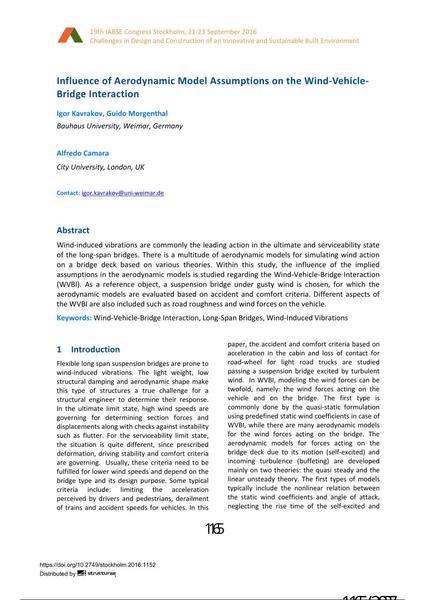Influence of Aerodynamic Model Assumptions on the Wind-Vehicle-Bridge Interaction

|
|
|||||||||||
Détails bibliographiques
| Auteur(s): |
Igor Kavrakov
(Bauhaus University, Weimar, Germany)
Alfredo Camara (City University, London, UK) Guido Morgenthal |
||||
|---|---|---|---|---|---|
| Médium: | papier de conférence | ||||
| Langue(s): | anglais | ||||
| Conférence: | IABSE Congress: Challenges in Design and Construction of an Innovative and Sustainable Built Environment, Stockholm, Sweden, 21-23 September 2016 | ||||
| Publié dans: | IABSE Congress Stockholm, 2016 | ||||
|
|||||
| Page(s): | 1165-1172 | ||||
| Nombre total de pages (du PDF): | 8 | ||||
| Année: | 2016 | ||||
| DOI: | 10.2749/stockholm.2016.1152 | ||||
| Abstrait: |
Wind-induced vibrations are commonly the leading action in the ultimate and serviceability state of the long-span bridges. There is a multitude of aerodynamic models for simulating wind action on a bridge deck based on various theories. Within this study, the influence of the implied assumptions in the aerodynamic models is studied regarding the Wind-Vehicle-Bridge Interaction (WVBI). As a reference object, a suspension bridge under gusty wind is chosen, for which the aerodynamic models are evaluated based on accident and comfort criteria. Different aspects of the WVBI are also included such as road roughness and wind forces on the vehicle. |
||||
